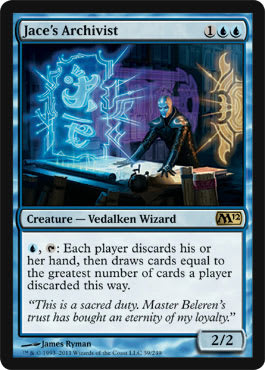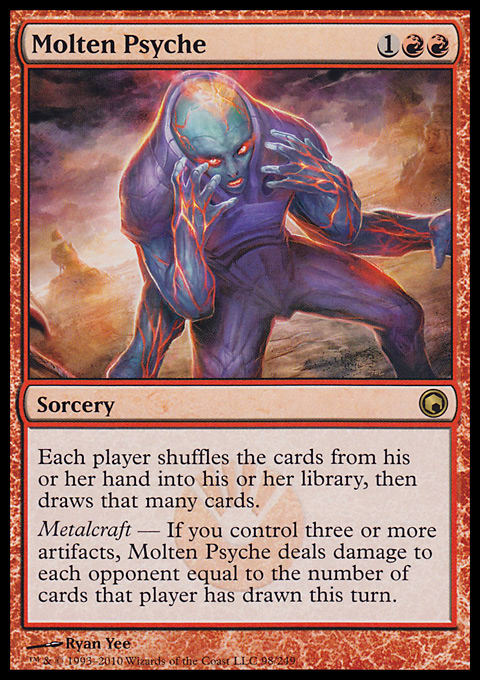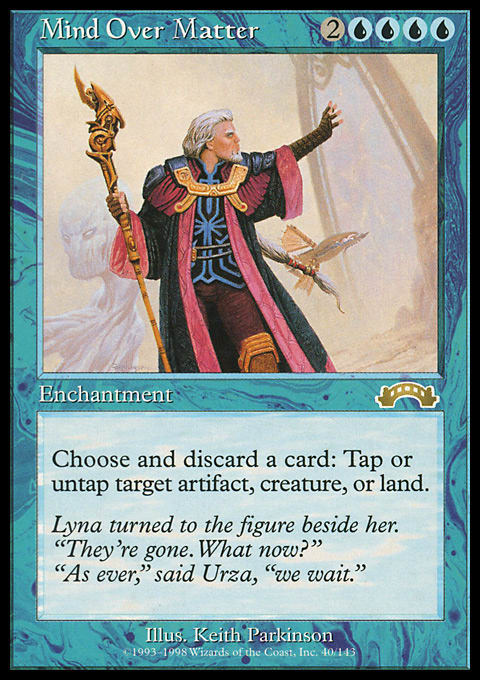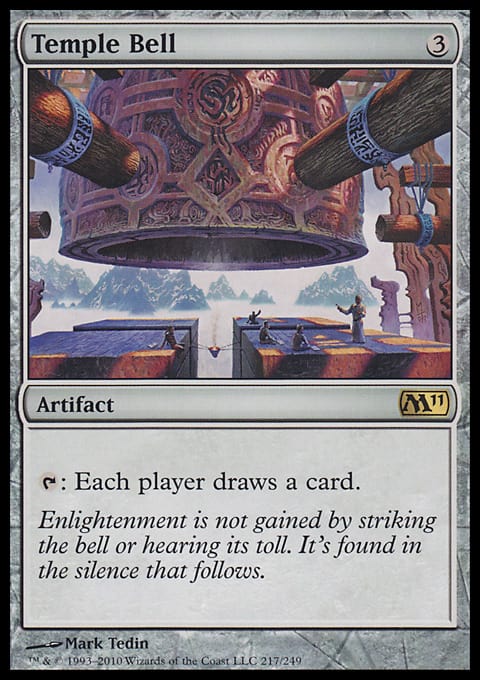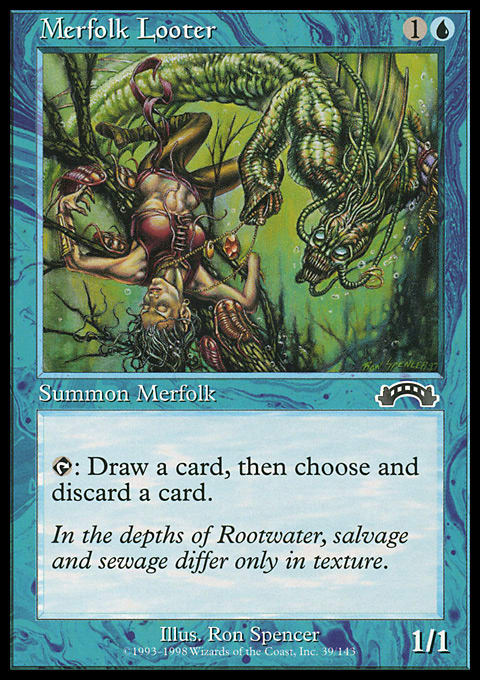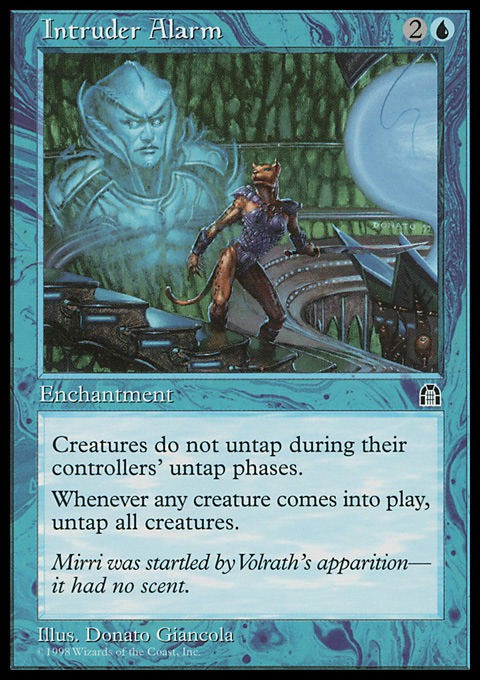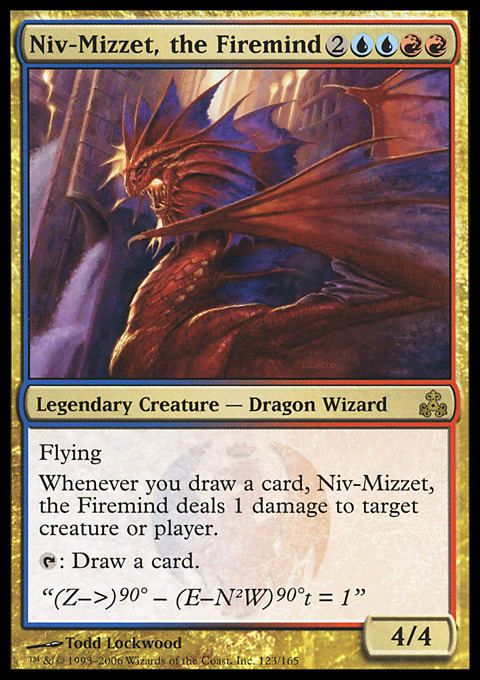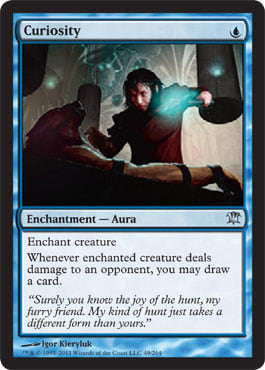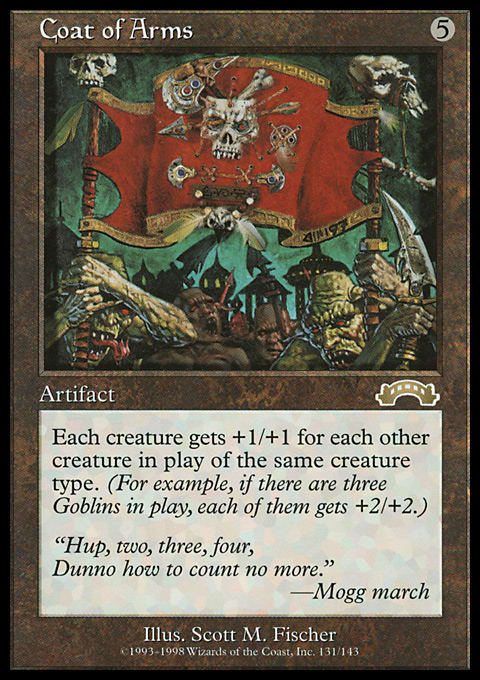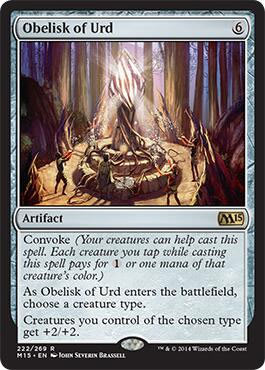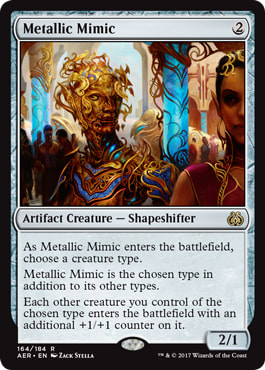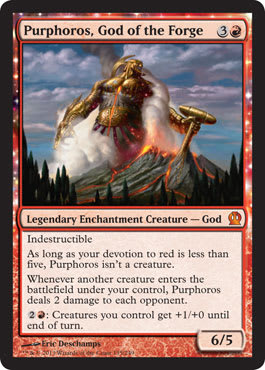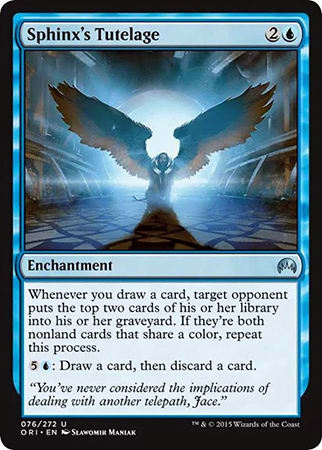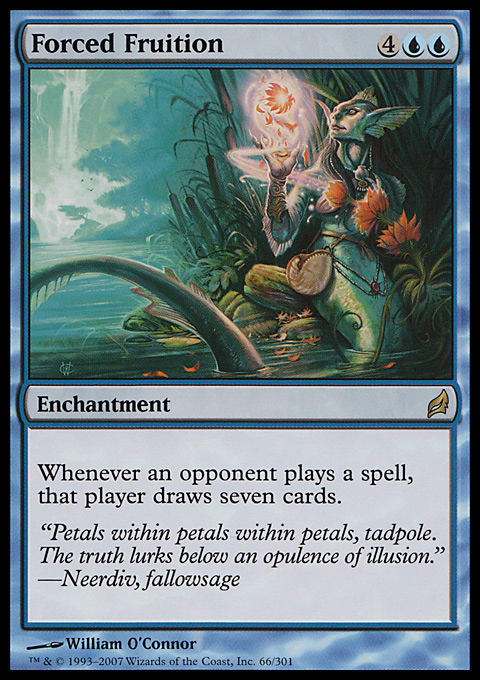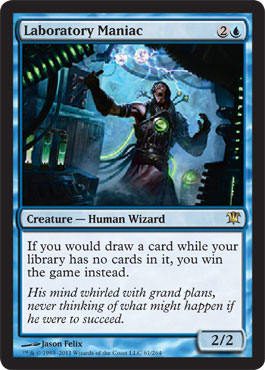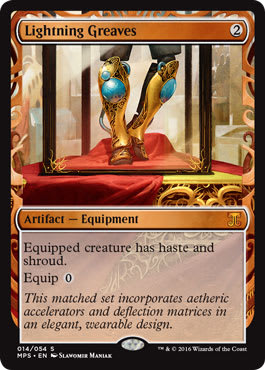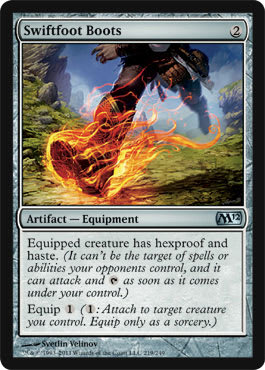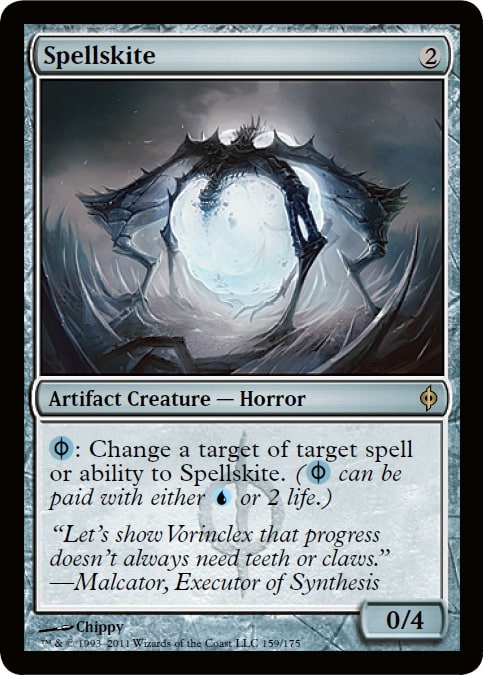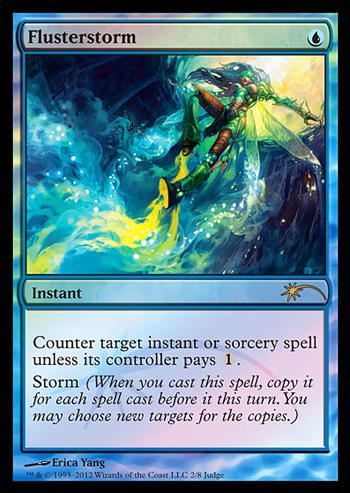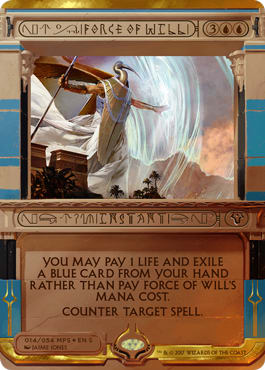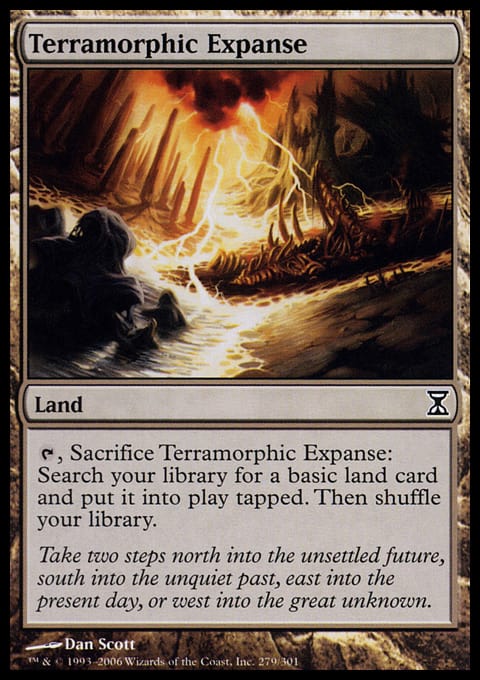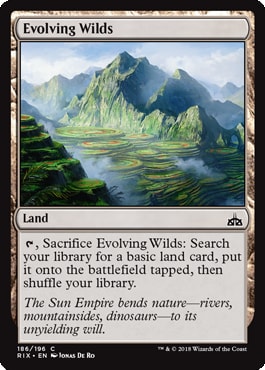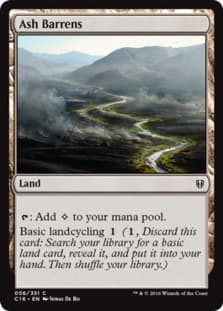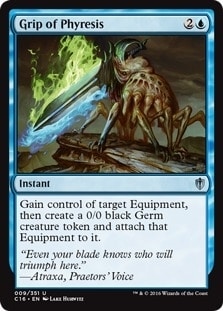It was a typical Tuesday, and I was wearily working through my tasks at work. I’d been up late the previous night with my son Isaac, and I was in dire need of a coffee break. Maybe the dark tonic, and some Hour of Devastation spoilers would revive me, and give me the energy needed to power through to lunch time. I sipped my coffee as I scrolled through Twitter, when I saw this guy:
I'm a sucker for ![]()
![]() cards. Even though Izzet is my favorite guild,
cards. Even though Izzet is my favorite guild, ![]()
![]() Legendary creatures have a habit of disappointing me. I didn’t expect this one to be any different. My inner-monologue was already starting in with the commentary.
Legendary creatures have a habit of disappointing me. I didn’t expect this one to be any different. My inner-monologue was already starting in with the commentary.
“Another six-mana ‘do-nothing’ . . . ” — I thought, as I scanned the card, looking for a redeeming quality. I jumped right to the activated ability, hoping for something awesome.
“Loot . . . Yep, who cares. It might be good for the Commander Battle Box though.” I still wasn’t impressed, but I figured I might as well read the rest of the card.
This is when the card started to show promise! Like all the other gods in this set, The Locust God has a pseudo Command Beacon built in. Of course, there’s always the possibility that it gets exiled, but for the times it doesn’t, this ability is a free roll for dodging Commander tax! Let’s keep reading.
“What!?” My mind was racing. I finished reading. " . . . and haste.” My head exploded. Good Game Wizards. You’ve successful replaced Uril, the Miststalker as my favorite Commander, and destroyed my wallet. There’s no use in fighting it, today we’re building The Locust God!
Let the Brewing Begin
Even at its fairest, The Locust God has the potential to totally take over games. The “level-zero” version of this deck employs a simple strategy; draw cards, make guys. With Locust God on the table, a Brainstorm, or a Treasure Cruise makes three 1/1 flyers. But if we dare to dream bigger, a Wheel of Fortune makes seven 1/1 flyers! Do you see where we’re going with this? Your mind should be swimming with cards like this:
We’re basically looking for any card that can efficiently draw us a lot of cards. This is why hand-looting cards like the ones above are best for this deck, because they draw the most cards for the least amount of mana. We have to beware of cards like Winds of Change, and Tolarian Winds, because they cost us a card. For example, if you have six cards in hand, then you play Winds of Change you’ll shuffle five cards into your deck and draw five. Drawing five cards for one mana is awesome, but if you play nothing but these effects, they’ll have diminishing returns over the course of the game.
Hand-looting effects, and cheap draw spells are a great starting place, but if we want to break this deck completely off the hinges, and uncover the bodacity1 of The Locust God — we’ve got to move beyond level-zero. Mass creature-generation is a powerful thing, and The Locust God has a built-in governor to keep it’s creature-making machine in check. The way it does this is by requiring you draw a card — which costs mana. We’ve done the clever thing and tried to side-step that by using cheap draw spells; but, even with cheap spells our resources will eventually run dry. If we want to unleash a plague of a million locust, we need to find a way to draw cards for free. This is where we dig deep for some gnarly combo technology.
Start Your Engines
An engine is a group of cards that facilitate a repeatable effect, typically with a focus on accomplishing one goal — in this case, making a million Insects. There are a lot of engines that can be used in this deck. Today we’re going to look at four of them. All of these engines assume The Locust God is in play (though they don’t all require it). Let’s start with the one that did not make it into the deck, though it easily could depending on your overall strategy.
Mind Over Matter + Temple Bell
To start this engine; tap Temple Bell to draw a card, then discard a card using Mind Over Matter’s ability to untap the Temple Bell. You can repeat this process to draw your deck. I like that you can use the Mind Over Matter to tap your opponents out before you start to combo- but typically this requires more cards than you have available which make it an unlikely play. If you can’t tap your opponents out, then it’s really risky to use this engine, since they’ll draw their entire deck — giving them access to all their disruption. But hey, if you like to live on the edge, or maybe you have a foil Temple Bell you’ve been dying to stick in a deck, here’s your chance!
Skullclamp + Ashnod’s Altar
This’ll probably be one of the signature engines of the deck (once people start building it). It starts by equipping the Skullclamp to an Insect token, in exchange for their noble sacrifice you’ll draw two cards, which will make two more insect tokens. This is where Ashnod's Altar comes into play. Sacrifice one token to the Altar, which will give you two colorless mana, use one to equip the Skullclamp to the other token, repeat this process until you’ve drawn your deck. I like this engine because it’s combined mana cost is low, meaning you can probably save it for the combo turn. It also does not require colored mana.
Merfolk Looter + Intruder Alarm
This is my favorite engine in the deck, and that’s because of its sheer quirkiness. This engine kicks off when you use a looter creature (you’ll see there’s a handful in the deck) to draw a card, which makes an Insect token. When the token comes into play, Intruder Alarm untaps the looter, and you can repeat the process. This engine does not require you to sacrifice your Insects so you can for an attack. If you have an Eldrazi in your deck with the shuffle ability then you can use this engine to go infinite — one million Locusts!!! A happy by-product of this approach is that you get access to a handful of looters to help you find combo pieces in the early game.
Arjun, the Shifting Flame, or Mindmoil + Cheap Spells
I call these two cards the "storm seals", because like a Seal of Doom or Seal of Cleansing, you play them onto the battlefield ahead of time. They both allow you to "storm off" by playing cheap spells, while using Phyrexian Altar to generate mana with your 1/1s. Since most cards in the deck allow you to draw more cards than the mana you’re spending, you should be able to generate a ton of extra 1/1s. Even if you don’t generate enough 1/1 to kill the table, it’s still a great way to simply dig for a different engine or a kill card if needed.
Niv-Mizzet, the Firemind + Curiosity
We’re going way back for this one, but it’s well worth the trip. This one is simple, play Niv-Mizzet, then enchant him with Curiosity (or Ophidian Eye), and tap him to draw a card. The draw will deal one damage to an opponent, then the Curiosity will trigger and you’ll draw another card, which will deal one damage, and so on. This is probably the weakest engine in the deck. It depends on Niv-Mizzet being able to tap, so that means that we have to wait a turn, or have a draw spell ready. On the bright side, if the life totals are close enough, you can end the game with this combo alone. You can also ignore life totals if you sense the coast is clear for a Laboratory Maniac.
All right, we’ve durdled long enough, let’s talk about winning the game.
Weaponizing the Engine
We’re going to talk about a handful of ways to utilize these engines to win the game. You’ll notice that I didn’t use all of these methods in the decklist below, but they were in my purview while building. I won’t go into too much detail about these options since many are self-explanatory. If you have questions, feel free to leave them in the comments. Let’s start with the first and most obvious way to weaponize (and enable) our engines, The Locust God himself.
The Locust God creates 1/1 tokens with Flying and Haste. This ability alone can win the game, but if you pair it with some Artifacts like the ones below, your air force will be even more formidable!
Of course, if an opponent puts up a no-fly zone with cards like Ghostly Prison or Propaganda, then we need a different approach. Thankfully, there are plenty of options that allow us to win without attacking. The next wave of cards can turn our Insects into fiery face darts.
Speaking of winning without attacking, if we want to approach winning on a completely different axis, then we could use a “mill” strategy. I previously mentioned that Mind Over Matter and Temple Bell didn’t make the cut, but if you employ a mill strategy it's a solid addition. I’m a little bit sad that this doesn’t use our Commander to win the game (this is why I didn’t support it in the decklist), but it could be a good auxiliary win condition for anyone in the market for one.
We're sitting on plenty of ways to draw our deck; from the Niv-Mizzet combo, to the single card combo of Enter the Infinite. This makes Laboratory Maniac a solid inclusion. The Maniac adds an additional detention to our end game. Not to mention that I’ve never won a game with the Maniac, and it’s on my bucket list.
Protecting the Goods
The decklist below is designed with one turn in mind; the combo turn. We’re not looking to eke out value over time. We’re looking to get The Locust God on the battlefield with open mana, and unload. The problem with this strategy is that there are other players at the table that don’t want us to do this. That's why we need some protection. We need some cards that are going to help up do our thing in the face of opposition.
The first wave of defense in this category is what I call the "Can't touch this" artifacts pictured below:

Oops, wrong artifact! Here we go:
Even though the two pieces of equipment expose our Commander to removal (before equipping), they’re still useful if we can find a window to play our Commander, and equip them safely. I think one skill that this deck will require is a keen sense of timing. This is also true of our second wave of defense, counterspells.
You'll notice that most of the counterspells in this deck are low mana, efficient answers to spells that could threaten our game plan. This is not a control deck. In a deck like this, I'd rather have a Dispel then counterspells like Mana Confluence, or Cryptic Command. We're looking to be agile, with the ability to seize opportunities given to us, it's harder to do that if your protection spell is four or five mana.
The last card in the protection category is one of my favorite cards of all time. I still remember the mind-blowing moment when I watched someone Mystical Teachings for a creature, because they had this card out. Teferi, Mage of Zhalfir offers a great layer of protections because he shuts down instants from our opponents, and gives us the ability to flash in The Locust God!
Imagine a scenario where turn five, you flash in Teferi. Then you put Lightning Greaves on him. Now, there is a one-turn window for the table to respond. If they don't, then you flash in The Locust God at the end of next turn and win. If they do have a board clear, then that's one less answer to The Locust God.
Death by 1,000,000 Locusts ? Commander | Jonathan Medina
- Commander (1)
- 1 The Locust God
- Creatures (17)
- 1 Arjun, the Shifting Flame
- 1 Bonded Fetch
- 1 Consecrated Sphinx
- 1 Enclave Cryptologist
- 1 Inspired Sprite
- 1 Jace's Archivist
- 1 Kozilek, Butcher of Truth
- 1 Laboratory Maniac
- 1 Mad Prophet
- 1 Magus of the Wheel
- 1 Merfolk Looter
- 1 Niv-Mizzet, the Firemind
- 1 Psychosis Crawler
- 1 Purphoros, God of the Forge
- 1 Spellskite
- 1 Teferi, Mage of Zhalfir
- 1 Trinket Mage
- Planeswalkers (2)
- 1 Dack Fayden
- 1 Jace, the Mind Sculptor
- Instants (10)
- 1 Blue Sun's Zenith
- 1 Brainstorm
- 1 Chaos Warp
- 1 Cyclonic Rift
- 1 Flusterstorm
- 1 Force of Will
- 1 Mana Drain
- 1 Muddle the Mixture
- 1 Swan Song
- 1 Tolarian Winds
- Sorceries (11)
- 1 Blasphemous Act
- 1 Enter the Infinite
- 1 Gitaxian Probe
- 1 Ponder
- 1 Preordain
- 1 Timetwister
- 1 Treasure Cruise
- 1 Vandalblast
- 1 Wheel of Fortune
- 1 Windfall
- 1 Winds of Change
- Enchantments (9)
- 1 Curiosity
- 1 Impact Tremors
- 1 Intruder Alarm
- 1 Leyline of Anticipation
- 1 Mindmoil
- 1 Mystic Remora
- 1 Ophidian Eye
- 1 Propaganda
- 1 Rhystic Study
- Artifacts (14)
- 1 Ashnod's Altar
- 1 Commander's Sphere
- 1 Expedition Map
- 1 Izzet Signet
- 1 Lightning Greaves
- 1 Mana Crypt
- 1 Mind Stone
- 1 Phyrexian Altar
- 1 Sensei's Divining Top
- 1 Skullclamp
- 1 Sol Ring
- 1 Swiftfoot Boots
- 1 Thought Vessel
- 1 Vedalken Orrery
- Lands (36)
- 3 Mountain
- 6 Island
- 1 Academy Ruins
- 1 Ancient Tomb
- 1 Blighted Cataract
- 1 Boseiju, Who Shelters All
- 1 Cephalid Coliseum
- 1 Command Tower
- 1 Darksteel Citadel
- 1 Desolate Lighthouse
- 1 Forgotten Cave
- 1 Halimar Depths
- 1 Highland Lake
- 1 Izzet Guildgate
- 1 Lonely Sandbar
- 1 Maze of Ith
- 1 Myriad Landscape
- 1 Reflecting Pool
- 1 Reliquary Tower
- 1 Scalding Tarn
- 1 Shivan Reef
- 1 Spirebluff Canal
- 1 Steam Vents
- 1 Sulfur Falls
- 1 Swiftwater Cliffs
- 1 Temple of Epiphany
- 1 Temple of the False God
- 1 Volcanic Island
- 1 Winding Canyons
Budget Consideration
I know how it is to build on a budget, so even though it was more work, I decided to write a bit on making this deck cheaper! I’ve gone through the deck and listed all the cards that come in over (or very close to) $10. I'm going to make suggestions for budget replacements for each card, and give some rationale to support my recommendation. This section is only meant to help guide you, it’s not a set-in-stone replacement guide. If you have other ideas, by all means, try them out. Also, keep in mind that going for budget options will lower the consistency, and level of competitiveness of the deck. That being said, it won’t make the deck “bad” or unplayable. You’ll still win plenty of games, and have a great time playing the deck.
Before we jump into the spells, let’s quickly talk about these color-fixing lands. The “non-budget” lands are listed below. We can replace these lands with “slower lands, because we’re not trying to combo in the early game. It’s totally fine to give up some points of consistency in the early game, for the sake of your wallet. Lands like Terramorphic Expanse, Evolving Wilds, Ash Barrens, and the $2 Mirage fetchlands are fine replacements.
All right, onto the spells!
Academy Ruins -> Buried Ruin: Academy Ruins is for getting back important combo pieces like Skullclamp, or your Altars. Buried Ruin is a one-time deal and not repeatable, but it’s better than nothing.
Ancient Tomb -> Basic Land: Ancient Tomb is for acceleration, but it’s not needed. A basic land will do just fine.
Boseiju, Who Shelters All -> Basic Land: Boseiju is for protecting your Enter the Infinite, it’s not necessary and may even be strictly worse than a basic, if you don’t have a lot of counterspells in your meta.
Consecrated Sphinx -> Sphinx of Lost Truths: Sphinx of Lost Truths is a poor replacement for Consecrated Sphinx, but it filters your hand, and gives you a body to block — I think that’s good enough.
DackFayden -> Faithless Looting / Grip of Phyresis: You lose some flexibility here, so you’ll have to pick an option that best suits your meta. Keep in mind with Grip you can taget your own Skullclamp to draw two.
Flusterstorm -> Stubborn Denial: This slot is for protecting The Locust God, since he’s a 4/4 Stubborn Denial is a nice replacement. It might even be better than Flusterstorm at protecting your Commander, but it’s not as good as a hedge against storm.
Force of Will -> Dispel / Invasive Surgery: Force of Will is also for protection, these other counterspells can serve as fine substitutes.
Jace, the Mindsculptor -> Pull from Tomorrow: This is an all-around good card, but it’s not needed for the deck. A free Brainstorm is nice once The Locust God is on the board, but how nice? It’s probably not worth the price of admission.
Leyline of Anticipation -> Another Looter or Combo Redundancy: I’m not sure what to replace this with since I’m already running the cheaper options of Winding Canyons, and Vedalken Orrey in the deck.
Mana Crypt -> Jeweled Amulet: Mana Crypt is more acceleration. Amulet is the little charge stone that could for those who want “acceleration” on the cheap. This card also lets you be a hipster, since you’ll be playing this card before it was cool (which will be some time in the future).
Mana Drain ->Counterspell: That was easy. Counterspell limits this slot to a protection slot, instead of giving it the flexibility of also being used a setup tool.
Purphoros, God of the Forge -> Pandemonium: The here substitution affects the timing of when you can play the card, since Pandemonium counts for your opponent’s creatures as well, you want to wait for the combo turn to play it.
Rystic Study ->As Foretold: You basically looking for a troublesome enchantment that can give you an edge. I haven’t tried As Foretold, but I can see a lot of potential here.
Sensei's Diving Top ->Aether / Pyrite Spellbomb: There’s no replacement for Top, ask Legacy Miracles players . . . OUCH too soon? I put a Spellbomb to give you the flexibility of a draw, or creature removal.
Wheel of Fortune -> Whirlpool Warrior: Wheel is one of the better cards in the deck but it’s not absolutely needed. The warrior was very close to making the cut anyways, so if you don’t have a Wheel this can stand in.
Ok, the next few cards are on a higher level than the ones above. You should really try to get these cards if possible, since they really bring the deck together. I’m still going to make some substitution recommendation, but do your best to get these cards.
Pyrexian Altar -> X: There’s nothing like this card. It’s about $30 and you need to acquire it soon, before the price gets even higher. Get this now, and you’ll thank me later.
Kozilek, Butcher of Truth -> Elixir of Immortality: The Eldrazi enables you to make infinite 1/1 when you have the Intruder Alarm / Looter engine going. You can use Elixir to do something similar, but it doesn’t double as a threat. It can however be fetched with Trinket Mage.
Spellskite ->Mizzium Skins: Spellskite keeps your Commander out of harm’s way. Mizzum Skin helps you do this, but there’s mana and timing considerations that make it the less desirable option.
Teferi, Mage of Zhalfir -> Defense Grid / Price of Glory: Because we are not a control deck, we can afford to go this route. If you decide to run these replacements for Teferi, you should also reconsider the presence of Leyline of Anticipation, Vedalken Orrery, and Winding Canyons.
Conclusion
Whew! That was a marathon run through this deck list! If you’ve made it this far, I thank you and give you a high-five. I hope that this article has been inspiring and helpful. I’d love to hear you’re take on the deck, or cards that should be in it. Please take some time to drop your thoughts in the comments. As always, thanks for reading! May your swarm of Locust devour the life totals of your enemies. <3
Jonathan Medina
1 Webster’s Dictionary says that Bodacity is not a word, but Kung Fu Panda disagrees.

















